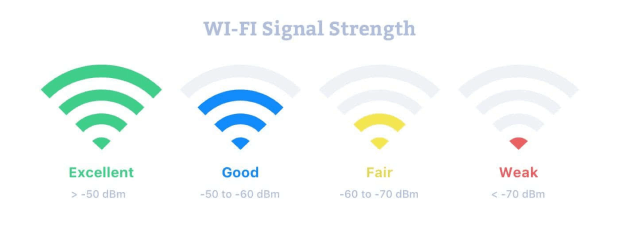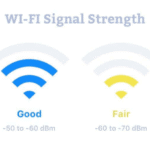
Taking a personal loan in present instances has ended up a really smooth project, specifically with the emergence of Fintech lending startups that have, through technological prowess, significantly simplified the loan system to make it way extra green, seamless, and convenient. If you’re figuring out how to take a private loan, the maximum vital element to don’t forget is the cost of the hobby, as your ROI is what determines your cost of borrowing.
The marketplace houses a couple of lenders, each offering loans at various interest rates. While top private banks are normally regarded as offering the most economical interest rates, certain P2P lenders claim to provide lower costs – an issue that, once closely looked at, appears incorrect. This is where the 2 sorts of fee systems associated with personal loans have to be understood, usually to ward off being hoodwinked by certain lenders.
The two price systems are the Flat Rate shape and the Reducing Balance Rate structure (also known as the Effective Interest Rate or EIR). Both these structures of paintings otherwise, and each computes hobby in a different hobby. The question of which of these hobby charges for picking out isn’t essentially the borrower’s desire; it’s miles the lender’s decision. But if the borrower has been given a desire, permit’s try to discover which of these fee structures paintings better in decreasing the price of borrowing.
The flat price shape
In the flat price structure, interest on your mortgage is calculated by thinking about the whole predominant and associating the annual interest of the loan with it. Let’s say you want to take out a loan for Rs. 1,00,000 from a lender at a flat interest charge of 12% p.a. For two years. Under the flat price scheme, the annual interest charge is immediately applied to the primary. Meaning the interest you’d be paying in this situation is – Rs. 24,000 (annual hobby of 12,000 x 2 (tenure)). Seems easy and easy.
The lowering stability price structure
Under the decreasing balance price, the interest is computed in another way, other than thinking about your loan foremost and the rate; it also takes into consideration your monthly payments. While you are making payments, interest on the annual fee is levied on the ultimate balance. Meaning, the hobby is technically levied every month as and as you maintain making payments.
Let’s say you’re taking out a mortgage of Rs. 1 lakh under the decreasing stability price shape at an interest rate of 12%. After your EMI is determined and you’re making your first month-to-month compensation, a hobby is calculated on the final stability and levied. This is going on until complete stability is achieved.
Which of those rates should you choose?
A critical issue to observe is that most creditors use the lower balance rate to compute the interest you’d be paying closer to your mortgage. As such, creditors don’t compute interest below the flat charge technique because the interest under this technique is tons lower compared to the lower stability fee.
Don’t get wooed by way of lenders claiming to offer ridiculously low costs of interest rates, particularly on unsecured loans. For all you realize, this is probably the flat hobby price and no longer the reduced stability fee. It is the lower stability rate that reflects the actual price of borrowing, and route, the hobby amount accompanying your mortgage. If we quantify the difference, a charge of roughly 8% underneath the flat charge shape amounts to a real price (below the lowering balance fee) of about 15% p.a.
The 12 months 2019 is in all likelihood to be 12 months of transformation as numerous cross-country and go-enterprise extensive forces take a form to alter the course of “enterprise-as-standard.”
Globally, the era of trade wars has taken center stage. There has been a marked shift from a long time of globalization that changed into infused into the arena of commercial enterprise culture.
Companies around the world are working across the economic iron curtain drawn by using US President Donald Trump. Several G-20 entities that published their 2018 12 months-end reports might be heading into elections and/or reforms in 2019.
The UK could be leaving the EU on March 29, 2019, after forty-six years and two months before the EU Parliament balloting. The EU itself could be grappling with its extremist right-wing proponents.
Brexit, along with America-China trade tensions, must and have made corporations reorganize their geographical blueprints. Case in point: BMW, having extensive China exposure, has relocated its US plant to China to keep away from China’s import tariffs on US goods.
On the other hand, China is fighting its personal demons in the form of debt overload and a monetary transformation from funding-driven to consumption-driven.
In India, the general elections present many possibilities that stoke the wheels of uncertainty even greater.
Be it fintech in banking, OTT in amusement, EVs in automotive, information security in cybertechnology, socially accountable ESG investing in investment management, the rise of niche investors shaping their groups, including ladies empowered workspaces, or next-gen family business marketers, or breakthroughs in healthcare, exchange is the theme for the year ahead.
In 2019, subdued enter expenses blended with rising capability utilizations can also assist agencies gain from stepped forward operating leverage and profitability. This ought to enhance the earnings outlook and ease valuation issues at the aggregate level.
The NSE benchmark fairness index is currently trading at 17.7 times to at least one-year forward envisioned income with an envisioned earnings boom of 19 percent between FY18- 20.
Rising home investor participation, wholesome income outlook, and modern affordable valuations should probably keep the momentum in home equities optimistic in 2019.
Having said that, we can’t rule out capability volatility associated with political uncertainty ahead of or in upcoming elections. Historically, though, searching in the past a long time of elections and market behaviors, such rate volatility has had little or no effect on lengthy-time period wealth creation.
The mid-cap valuation charges over large caps came down in 2018, making the previous attractive again. Private banks, construction substances, unique chemicals, and purchaser meals sectors are expected to outperform, led by healthy demand and earnings growth.
The 12 months of 2019 are likely to be 12 months of transformation as numerous go-to-market and cross-industry huge forces take shape to modify the direction of “business-as-common.”
Globally, the generation of trade wars has taken center stage. There has been a marked shift from a long time of globalization infused into enterprise culture.
Companies around the world are working around the financial iron curtain drawn by USA President Donald Trump. Several G-20 entities submit their 2018 1212-monthalks talks to be heading into elections and/or reforms in 2019.
The UK would be leaving the EU on March 29, 2019, after forty-six years and months earlier than the EU Parliament vote casting. The EU itself might be grappling with its extremist right-wing proponents.












